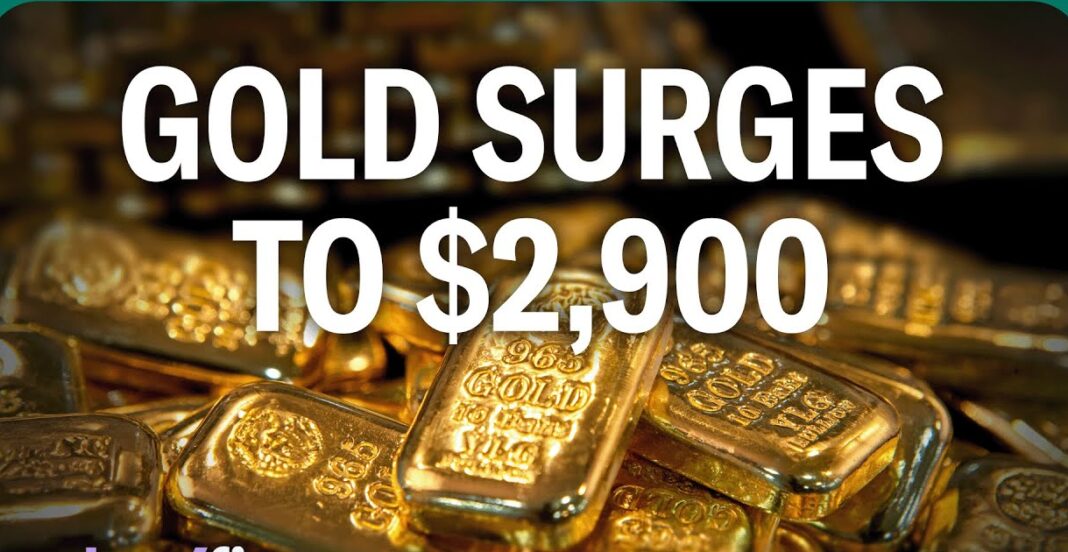Gold prices are approaching record highs, nearing $3,000 per ounce, driven by trade tensions and economic uncertainty. The surge reflects increased investor interest in safe-haven assets, as financial markets react to new tariff policies and inflation concerns.
Factors Driving Gold’s Record Surge
Several key factors contribute to the rise in gold prices:
- Trade tariffs: Investors seek gold as a hedge against economic disruptions.
- Central bank purchases: Global reserves of gold are increasing, reinforcing demand.
- Inflation risks: Economic policies create concerns over currency devaluation, boosting gold’s appeal.
- Market uncertainty: Analysts warn that continued U.S. trade policy shifts could push prices even higher.
Wall Street’s Bullish Outlook on Gold
Leading financial institutions have raised their forecasts:
- Goldman Sachs had predicted $3,000 per ounce by mid-2020, but now sees upside risk beyond that target.
- JP Morgan remains bullish on gold, citing strong investor and central bank demand.
- ETF inflows show increased interest, signaling long-term confidence in gold’s value.
Historical Trends: Tariffs and Gold Prices
Gold’s price history aligns with global trade tensions:
- In 2018, under Trump’s tariffs, gold surged 50% over two years.
- Similar economic conditions today indicate a potential repeat of that rally.
- Analysts suggest gold’s trajectory depends on whether trade tensions persist.
Future Predictions and Strategic Considerations
If trade conflicts escalate, gold could see further gains. Key factors to watch:
- U.S. trade policies – Tariff increases could sustain gold’s rally.
- Global central bank actions – Increased gold reserves signal long-term demand.
- ETF investment trends – Market confidence in gold affects price momentum.
- Inflation and economic stability – Gold thrives during financial uncertainty.
- Stock market volatility – Declining equities often push investors towards gold.
With ongoing global economic uncertainty, gold remains a preferred hedge against inflation and geopolitical risks.
Disclaimer
This article is based on publicly available data and financial analysis. Investment decisions should be made with professional financial advice.
Jack Reynolds is a market analyst with a focus on equity markets, alternative investments, and macroeconomic trends.




